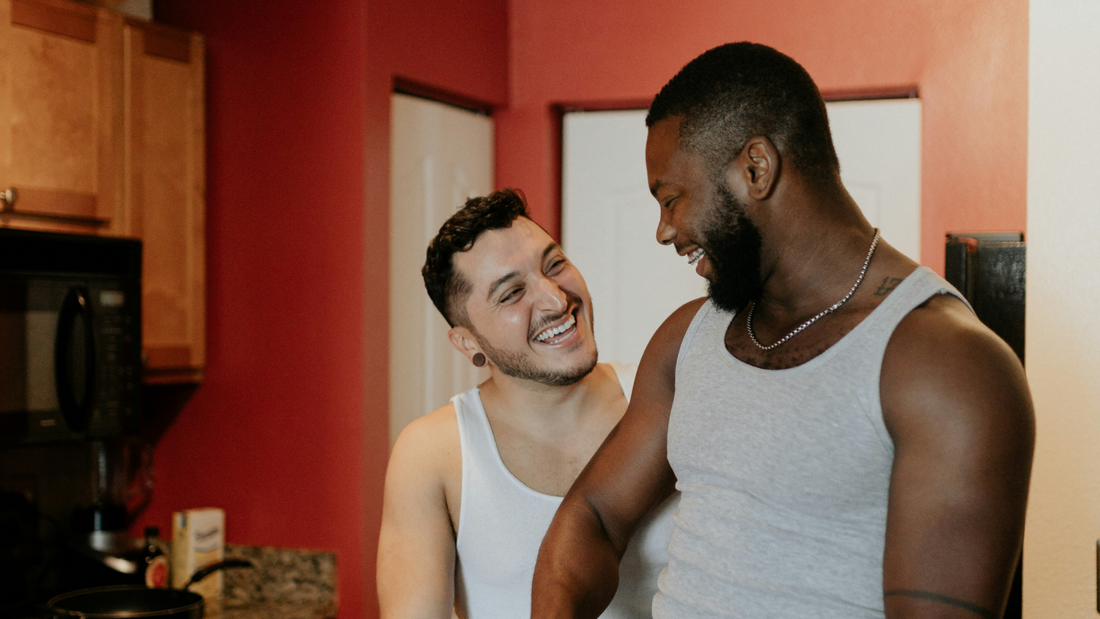
Understanding the Five Love Languages
Disclaimer: The concept of love languages was developed by Gary Chapman, whose perspectives are rooted in traditional views on relationships. While it may not fully encompass diverse experiences across cultures or orientations, it offers a starting point for conversations about emotional needs.
The way we experience love is different for each of us. When someone makes you feel seen, valued, and loved, it is often tied to a deeper connection – our unique “love language.” Whether you’ve just heard of Gary Chapman’s The Five Love Languages or have already tried to discord your partner’s, this framework has a knack for sparking those “aha” moments in relationships.
This isn’t just about romantic relationships – but for all the connections in our lives. Its the framework for understanding how we express and receive love. In this blog, we’ll explore each of the five love languages, and how they can help us show up for the people we care about.
What Are the Five Love Languages?

According to Chapman, everyone has a primary love language that dictates how they prefer to express and receive affection. And it boils down to five core expressions (the five love languages):
Words of Affirmation
This language best expresses through verbal appreciation, heartfelt compliments, and words of encouragement. For those who value words of affirmation, hearing “I love you” or a simple “I’m proud of you” can make their day.
Quality Time
This language emphasizes spending meaningful time together. It’s not about grand gestures; it’s about being fully present, whether that’s sharing a meal or binge-watching your favorite show together.
Physical Touch
This language involves physical expressions of love. Think hugs, hand-holding, or just a comforting pat on the back. For those who resonate with this, touch is a way to feel connected.
Acts of Service
This language focuses on actions that help or serve one’s partner. Doing something thoughtful—like cooking dinner or running an errand—speaks louder than words. These actions say, “I care about you enough to make your life a little easier.”
Receiving Gifts
This language is about giving thoughtful gifts as a way to show love. No, it’s not about materialism. It’s the thoughtfulness behind the gift that matters—a small, meaningful token can carry immense emotional weight.
Why Love Languages Matter in Relationships
You and your partner will not always speak the same love language. If you pour your heart into acts of service – making your partner’s coffee every morning or tidying up before they get home from work – only to feel frustrated when they don’t seem to notice. Meanwhile, they’re wondering why you don’t say “I love you” more often. That’s where understanding your partner’s love language can significantly enhance your relationship.
When you and your partner learn to speak each other’s love languages, it’s like finding the missing piece to a puzzle. You begin to feel more seen, appreciated, and connected.
Research backs this up! A study in PLOS ONE found that couples who actively used each other’s love languages reported higher relationship satisfaction and stronger emotional bonds [1]. This suggests that being attentive to your partner’s love language (and your own) can lead to a more fulfilling relationship.
How Do I Tell What My Love Language Is
Not sure where to start? Here’s a few ways to figure out what your love language is:
- Reflect on What Feels Good: Think about past relationships or experiences where you’ve felt most loved. Was it a thoughtful gift? A meaningful conversation? A cuddle while watching your favorite movie?
- Notice Your Reactions: Pay attention to how you react when others express affection toward you. Do you feel happiest and most comfortable when receiving words of encouragement that lift you up, being in their company, or receiving those little gifts that made you feel important?
- How Do You Show Love?: Sometimes, the way you naturally express love to others mirrors your own love language. So, how do you typically show love to others?
How To Tell Someone’s Love Language
 Meme by @SarahCAnderson on Twitter (2021)
Meme by @SarahCAnderson on Twitter (2021)
It takes patience and empathy, here’s how you can learn to “speak” your partner’s love language:
- Observe Their Preferences: How does your partner express affection toward you and others? Do they often compliment you? Do they enjoy spending quality time together?
- Ask Directly: Open communication is key. Ask your partner what makes them feel loved and appreciated.
- Pay Attention to Complaints: If your partner frequently expresses dissatisfaction about how they feel loved, it may provide clues about their primary love language.
Criticisms of the Love Language Theory
While the Five Love Languages have gained popularity, they are not without criticism:
- Lack of Scientific Evidence: Some researchers argue that there’s insufficient empirical support for the theory’s core assumption – that everyone has a singular love language and matching can lead to greater satisfaction [2].
- It Can Oversimplify Emotions: People don’t fit neatly into boxes. And it can oversimplify the complexity of human emotions and relationships.
- Cultural Considerations: Chapman’s framework was developed within a specific cultural lens – largely white and heterosexual – which may not resonate with all individuals or relationships.
- Relationships Are Dynamic: Our love languages can evolve over time based on experiences, challenges, and personal growth.
Despite these criticisms, it’s still a helpful tool for opening up conversations about emotional needs, even if it’s not the be-all and end-all of relationship advice.
My Experience with Love Languages
My first big relationship was a crash course in love languages—though I didn't know it at the time. Looking back, it's like we were speaking totally different emotional languages, and neither of us had the dictionary.
My partner's love language was quality time, but wow, did we have different definitions. For them, quality time meant literally any time together. And I mean any time. Watching me work? Quality time. Sitting silently while I did homework? Quality time. Just existing in the same room? Absolutely quality time. What they saw as intimacy, I saw as being smothered. I felt like I couldn't breathe, couldn't have a moment to myself.
Meanwhile, my love languages were this mix of physical touch, gift-giving, and quality time—but quality time with a massive asterisk. My version wasn't about quantity, it was about those intense, meaningful moments. Like dragging ourselves out at 3 AM to catch a sunrise at the Grand Canyon. Or giving up my entire holiday break to spend more time with her at university. Or creating these super personal gifts—like a bouquet of balloon flowers (because she was allergic to real ones).
My love was in the small moments. Rubbing her hands when I saw her leg start that anxious tap. Those quiet, attentive gestures that said "I see you" without making a big deal about it.
We didn't understand each other's languages. And looking back, that was our biggest problem. Love languages are about truly seeing and responding to how the other person experiences love.
Want a pro tip? Learn to be a translator in your relationships. It's worth it.
References
[1] Mostova O, Stolarski M, Matthews G (2022) I love the way you love me: Responding to partner’s love language preferences boosts satisfaction in romantic heterosexual couples. PLoS ONE 17(6): e0269429. https://doi.org/10.1371/journal.pone.0269429
[2] Park, Y., Impett, E. A., & MacDonald, G. (2024). Evaluating Love Languages From a Relationship Science Perspective. Perspectives on Psychological Science. https://journals.sagepub.com/doi/10.1177/09637214231217663